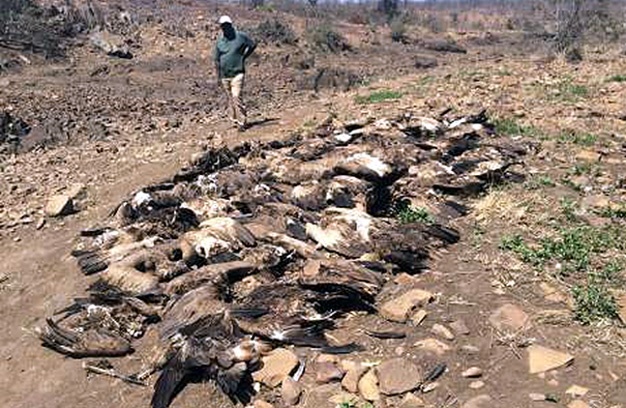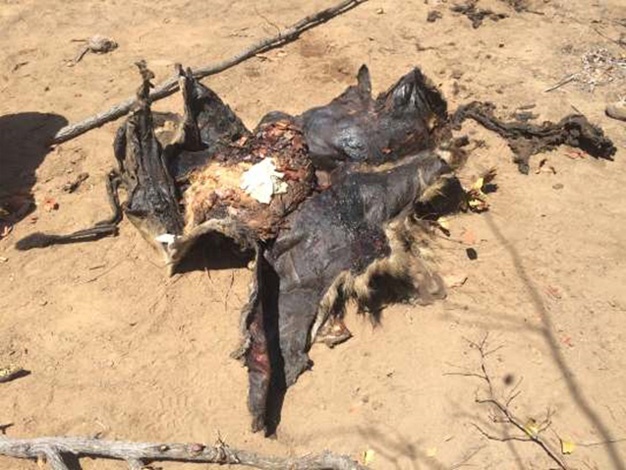Threats to Lions & Lion Conservation
- Lisbeth
- Site Admin
- Posts: 65800
- Joined: Sat May 19, 2012 12:31 pm
- Country: Switzerland
- Location: Lugano
- Contact:
Re: Threats to Lions
Why not? But around Kruger there is not only rural land. Probably to many towns and industries 
"Education is the most powerful weapon which you can use to change the world." Nelson Mandela
The desire for equality must never exceed the demands of knowledge
The desire for equality must never exceed the demands of knowledge
Re: Threats to Lions
There are no free roaming lion in SA 
Might be relevant with regard to corridors etc when expanding reserves to greater conservation areas.
The introduction of lions has halted some projects because communities would be confronted with lions.
Might be relevant with regard to corridors etc when expanding reserves to greater conservation areas.
The introduction of lions has halted some projects because communities would be confronted with lions.
Re: Threats to Lions
See the proposal to transfer African populations of lion to CITES Appendix I
https://cites.org/sites/default/files/e ... ra_leo.pdf
Some interesting data there on population size and exports.
https://cites.org/sites/default/files/e ... ra_leo.pdf
Some interesting data there on population size and exports.
- Lisbeth
- Site Admin
- Posts: 65800
- Joined: Sat May 19, 2012 12:31 pm
- Country: Switzerland
- Location: Lugano
- Contact:
Re: Threats to Lions
You sure give us reading stuff for the next few weeks, Toko  I'll have to find some free brain space for all this
I'll have to find some free brain space for all this 
"Education is the most powerful weapon which you can use to change the world." Nelson Mandela
The desire for equality must never exceed the demands of knowledge
The desire for equality must never exceed the demands of knowledge
- Lisbeth
- Site Admin
- Posts: 65800
- Joined: Sat May 19, 2012 12:31 pm
- Country: Switzerland
- Location: Lugano
- Contact:
What future is there for Africa’s lions?
"Education is the most powerful weapon which you can use to change the world." Nelson Mandela
The desire for equality must never exceed the demands of knowledge
The desire for equality must never exceed the demands of knowledge
- Lisbeth
- Site Admin
- Posts: 65800
- Joined: Sat May 19, 2012 12:31 pm
- Country: Switzerland
- Location: Lugano
- Contact:
ShockWildlifeTruths: Mass poisoning in Limpopo National Park
ShockWildlifeTruths: Mass poisoning in Limpopo National Park
2016-10-10 18:13 - Don Pinnock
The ongoing Asian demand for lion bones has led to an horrific wildlife poisoning in the Limpopo National Park, just over the Mozambican border from Kruger Park.
A mere two kilometres from the Machampane tourist camp, a research team came across the carcases of two nyala, a warthog and an impala laced with what they describe as a black granular poison. Lying nearby were two lions, 51 vultures, three fish eagles, a yellow-billed kite and a giant eagle owl. There was evidence of a leopard but its body was not found.
The lions had been dismembered, their bones removed, and 22 vultures had been decapitated, their heads presumably to be used for muti. Snares had also been set around the poisoned carcases. The team from the Limpopo Transfrontier Predator Project burned all the poisoned carcasses.
At the recent Convention on International Trade in Endangered Species (CITES), wild lions remained listed as Appendix 11 with a ‘zero annual export quota for bones, bone pieces, products, claws, skeletons, skulls and teeth removed from the wild and traded for commercial purposes.’ However, in a shock move, captive breeders escaped the ban, with South Africa only required to submit an annual quota for bone exports from captive breeding facilities.


 (Conservation Action Trust)
(Conservation Action Trust)
Will Travers, President of the Born Free Foundation, called it an appalling decision which would perpetuate captive breeding bone trade. He called a sad day for CITES. Conservationists have pointed out that it’s impossible to distinguish between the bones of captive or wild lions, leaving the door wide open for laundering of poached animal parts.
Nine African nations – Niger, Chad, Côte d’Ivoire, Gabon, Guinea, Mali, Mauritania, Nigeria and Togo – sought to uplist lions to Appendix I, offering full trade protection However, in a compromise move, CITES allowed the marketing of captive lion bones. According to the filmmakers of Blood Lions, this was ‘an attempt to appease the fierce opposition from lion bone and body part traders and the hunting for entertainment enthusiasts’
The Limpopo research team found the two lions had been carried 200 metres away from the epicenter of the poisoning onto a nearby ridge and butchered. The skins, a portion of the abdomens with significant layer of fat and the intestines were left.
The two male lions were both estimated to be about two years old. All their bones had been removed and meat had been cut into strips, dried and mostly removed.
This is the second poisoning event that has targeted the lion pride in this same area. The first one, in July 2014, killed three adult lions, seven white-backed vultures and a bateleur eagle. According to the team, “this poisoning is the first time that we have found evidence of lions being targeted for their bones in the park. Considering the prevalence of commercial rhino and elephant poaching in the region over the past five years we are concerned that this event could mark the beginning of large-scale poaching of lions for their bones in the Limpopo National Park”.
2016-10-10 18:13 - Don Pinnock
The ongoing Asian demand for lion bones has led to an horrific wildlife poisoning in the Limpopo National Park, just over the Mozambican border from Kruger Park.
A mere two kilometres from the Machampane tourist camp, a research team came across the carcases of two nyala, a warthog and an impala laced with what they describe as a black granular poison. Lying nearby were two lions, 51 vultures, three fish eagles, a yellow-billed kite and a giant eagle owl. There was evidence of a leopard but its body was not found.
The lions had been dismembered, their bones removed, and 22 vultures had been decapitated, their heads presumably to be used for muti. Snares had also been set around the poisoned carcases. The team from the Limpopo Transfrontier Predator Project burned all the poisoned carcasses.
At the recent Convention on International Trade in Endangered Species (CITES), wild lions remained listed as Appendix 11 with a ‘zero annual export quota for bones, bone pieces, products, claws, skeletons, skulls and teeth removed from the wild and traded for commercial purposes.’ However, in a shock move, captive breeders escaped the ban, with South Africa only required to submit an annual quota for bone exports from captive breeding facilities.


 (Conservation Action Trust)
(Conservation Action Trust)Will Travers, President of the Born Free Foundation, called it an appalling decision which would perpetuate captive breeding bone trade. He called a sad day for CITES. Conservationists have pointed out that it’s impossible to distinguish between the bones of captive or wild lions, leaving the door wide open for laundering of poached animal parts.
Nine African nations – Niger, Chad, Côte d’Ivoire, Gabon, Guinea, Mali, Mauritania, Nigeria and Togo – sought to uplist lions to Appendix I, offering full trade protection However, in a compromise move, CITES allowed the marketing of captive lion bones. According to the filmmakers of Blood Lions, this was ‘an attempt to appease the fierce opposition from lion bone and body part traders and the hunting for entertainment enthusiasts’
The Limpopo research team found the two lions had been carried 200 metres away from the epicenter of the poisoning onto a nearby ridge and butchered. The skins, a portion of the abdomens with significant layer of fat and the intestines were left.
The two male lions were both estimated to be about two years old. All their bones had been removed and meat had been cut into strips, dried and mostly removed.
This is the second poisoning event that has targeted the lion pride in this same area. The first one, in July 2014, killed three adult lions, seven white-backed vultures and a bateleur eagle. According to the team, “this poisoning is the first time that we have found evidence of lions being targeted for their bones in the park. Considering the prevalence of commercial rhino and elephant poaching in the region over the past five years we are concerned that this event could mark the beginning of large-scale poaching of lions for their bones in the Limpopo National Park”.
"Education is the most powerful weapon which you can use to change the world." Nelson Mandela
The desire for equality must never exceed the demands of knowledge
The desire for equality must never exceed the demands of knowledge
- Lisbeth
- Site Admin
- Posts: 65800
- Joined: Sat May 19, 2012 12:31 pm
- Country: Switzerland
- Location: Lugano
- Contact:
Re: ShockWildlifeTruths: Mass poisoning in Limpopo National Park
The criminals are always ahead 
"Education is the most powerful weapon which you can use to change the world." Nelson Mandela
The desire for equality must never exceed the demands of knowledge
The desire for equality must never exceed the demands of knowledge
- Richprins
- Committee Member
- Posts: 75269
- Joined: Sat May 19, 2012 3:52 pm
- Location: NELSPRUIT
- Contact:
Re: ShockWildlifeTruths: Mass poisoning in Limpopo National Park
Ja, got a message yesterday the delightful Moz locals are turning to lion bones now, as are their SA counterparts in a lesser sense, and fueling this trade as rhino and ellies are gone in that locality. The lion bones can replace tiger bones in the east, conveniently... 
It is a major disaster for vultures, who breed rather slowly and are vital for sorting out carcasses!
Lion breed very quickly!
It is a major disaster for vultures, who breed rather slowly and are vital for sorting out carcasses!
Lion breed very quickly!
Please check Needs Attention pre-booking: https://africawild-forum.com/viewtopic.php?f=322&t=596


